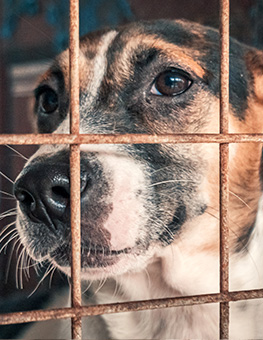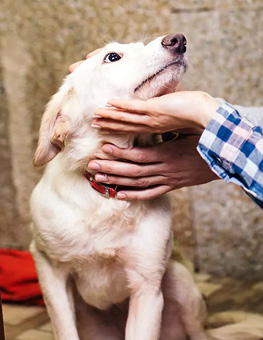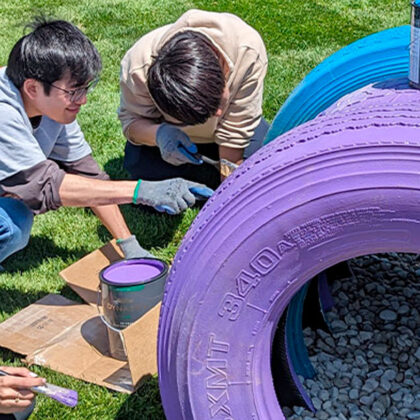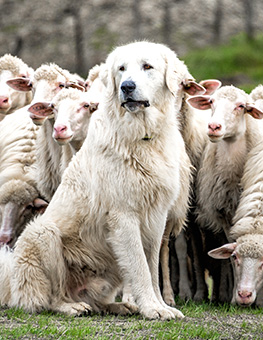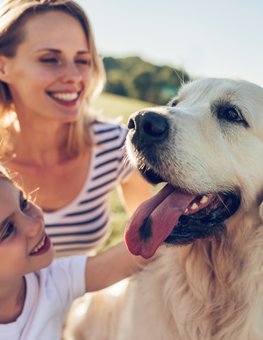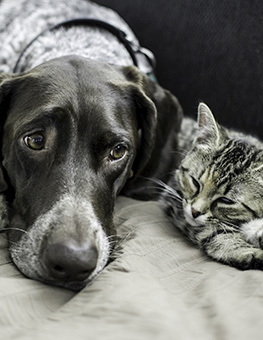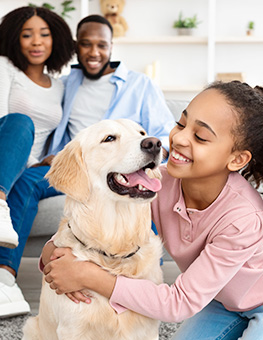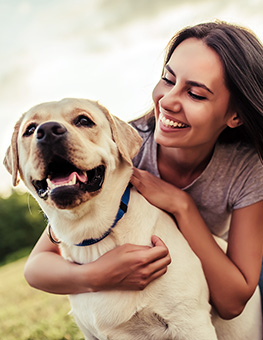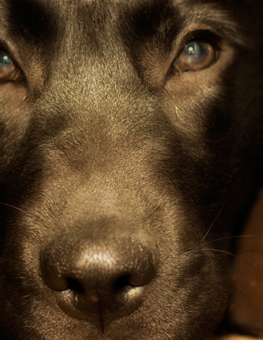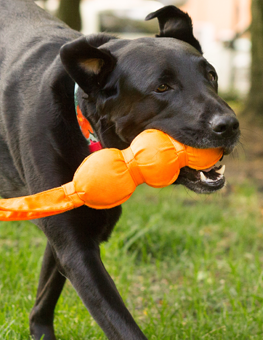Tips for Fostering Rescue and Shelter Dogs
Fostering is a great way to help your local shelter or rescue, this helps create more room in the shelter so they are able to save more dogs in need. It also gives the foster dog an opportunity to learn basic house rules before moving into their forever home.
Check out some fostering tips below before deciding if fostering is right for you.
-

Indy is a foster dog with the Home for Good dog rescue.
Puppy proof your house before bringing the dog home. Make sure there is nothing the dog can get into that can be harmful.
- Assume they are not house trained. Even if they were in a previous setting, a new home and family can throw that off. Start training them to go outside as soon as they come home.
Adding bells on the doors can be very helpful. Have them watch you ring them or take their paw to hit them, as you use a command like “outside” right before you go out. They’ll eventually associate this with going outside and ring the bell on their own when they need to go. Dog pads can also be helpful to leave around the house if they have accidents in between outside potty breaks. - If you have another dog, introduce them on mutual territory before bringing the new dog into the house, making sure they get along. Follow your current dog’s behavior and let them set the boundaries. Don’t force the new dog into their space as this can create a fight.
- Once you know they get along with the new dog, let them follow their lead! They will quickly learn a schedule and rules from them.
- Be patient. They likely came from a stressful environment and will need time to rest and realize they are in a safe place now. Let them walk around and smell their new space before overwhelming them with new activities or meeting new people.
-

Ollie and Boo are dogs being fostered through Home for Good dog rescue.
Enjoy the cuddles! It’s a small victory when your foster feels safe enough to cuddle with you.
- Stick to a routine, this helps the dog get comfortable. Try feeding, going for walks and bedtime around the same time each day.
- Crate train. This will keep your house and the dog safe while you sleep or if you are not home. It’s best to use half the crate for a bed and the other half for a dog pad. They likely will not relieve themselves where they sleep.
- Keep lots of toys around, this will keep them busy and less likely to chew your belongings or furniture.
- Start training them. Being able to share what they have learned already to prospective new pet parents will help to get them adopted and make their transition into their forever home much easier.
- Never let the dog off leash unless in a gated area. Most rescue/shelter dogs are skittish and tend to run if they get scared.
- Be happy to say goodbye! As hard as it is, and as guilty as you may feel giving them to a new home - you have to remind yourself that without your help of fostering, they may have never been saved!
If you feel overwhelmed by this, you can always start by volunteering at your local shelter/rescue and go from there! You can also find more detailed information about fostering at Best Friends Animal Society.
About the author, Katie:
Katie began volunteering at her local dog rescue about six years ago. Shortly after she adopted her dog Lacey; “I wanted to help more rescues get the happy ending they also deserved," says Katie, “so I began fostering about four years ago, I never knew what a rewarding experience this could be. It's amazing to see a dog come in afraid, and hardly any interactions with humans, to being the most loving and social dog because you opened your home to them."
Follow Katie’s fostering adventures on Instagram @laceytotherescue.



